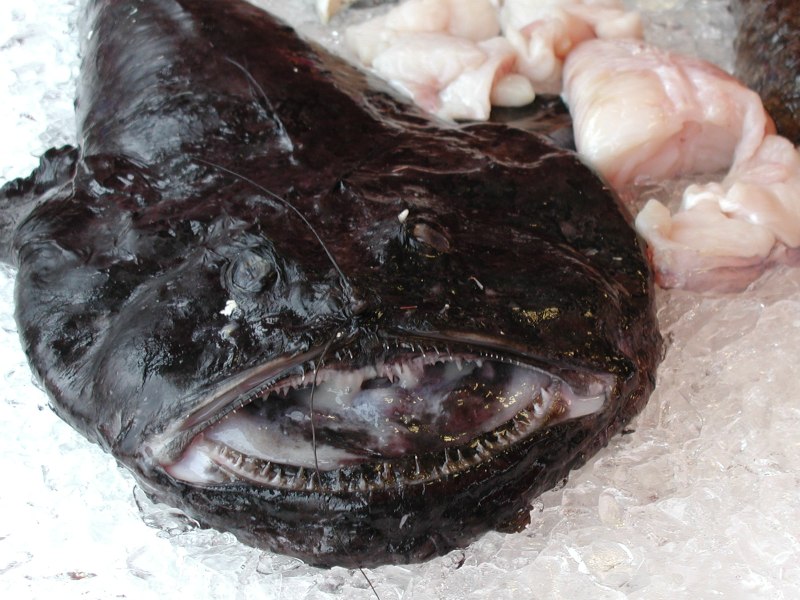Monkfish

Species Description
Monkfish Lophius americanus
also known as goosefish, angler fish
Wild.
Monkfish live on the bottom of the Atlantic from the Gulf of St. Lawrence to North Carolina. They are brown above with a white belly. Often referred to as “all mouth,” the monkfish has a narrow, tapered body but a broad flat head with an enormous mouth lined with long, needle-like teeth. Monkfish can grow to a length of over four feet and weigh up to 50 pounds. An “angler fish,” the monkfish uses a fleshy appendage dangling from its head as “bait” to attract prey.
Season
Year-round.
Status
The Gulf of Maine stock does not have a stock assessment that provides information about the overfishing and overfished status (Fishwatch.gov).
Regulatory Authority
Jointly managed by New England and Mid-Atlantic Fishery Management Councils.
Harvest Method
Gillnet, trawl, and drag. See the vessel and gear guide for more information.
Recreational Harvest
Occasionally, anglers who are using live bait in search of other groundfish haul up a monkfish. Extra care should be taken when handling these fish because their bite can be dangerous!
Maine state waters:
No minimum size, three monkfish per angler per day.
Federal waters:
Minimum Size Limit: 17 inches total length (whole fish) or 11 inches tail length (tails only).
All landings of monkfish must be reported to NOAA Fisheries within 24 hours. This can be done online at hmspermits.noaa.gov or by calling 800-894-5528.
Permit Requirement: A Federal Highly Migratory Species (HMS) Angling Permit is required to fish for monkfish in federal waters. This permit is issued to the fishing vessel and covers all anglers onboard. Anglers can apply for a permit online at hmspermits.noaa.gov or by calling 888-872-8862.
Health Benefits & Risks
Monkfish is a low-fat, low-calorie source of selenium, but is lower in omega-3 fatty acids than other fish. Monkfish is relatively low in mercury.
View the 2021 US Food and Drug Administration’s fish consumption guidelines.
Buying & Preparing
Monkfish is commonly sold as tails, livers, or whole gutted fish. The firm, boneless white tail meat is often called “poor man’s lobster” due to its rich, lobster-like flavor and meaty texture.
Monkfish tails are the most popular cut in markets and restaurants. The livers, prized as a delicacy known as ankimo in sushi cuisine, are typically exported to Asia but may occasionally be found fresh locally.
The tail meat holds up well to roasting, grilling, or pan-searing, offering a dense texture that works well in stews and seafood dishes. Monkfish liver can be steamed and served as sushi or pâté.
Recipes
Certifications & Verifications
Links
- Read an article about monkfish in Wild Catch magazine
